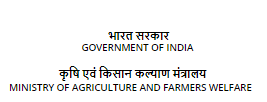Rajalakshmi (CRHR 5)-2006, 2010
Background:
India has largest area under rice (about 43.86 mha) and second largest in production (106.0 mt) in the world. Country has so far developed and commercialized over 1300 rice varieties (including 127 hybrids) suitable for cultivation under different rice ecologies.
However, meager quantity of quality seed availability (SRR ~40.42%) and high perceptivity to fragile climatic influences, its production is remaining low (3.66 t/ha) as compared to the global averages of 4.53t/ha (FAO, 2016). The situation is even worse in traditional rice growing regions like Odisha (4.17 mha, 1992 kg/ha, SRR-21.65%) and West Bengal (5.38 mha, 2730 kg/ha, SRR-33.67%) where rice is main commodity of livelihood. Most of the cultivable land is suitable for rice production has already been exploited. The inputs like water and other national resources are being diversified towards production of other crops as well as in industry and urbanization. The premier rice varieties of green revolution era like jaya and IR-8 have reached to a yield plateau. In this scenario, hybrid rice technology (15-20% more yield than HYVs) is considered a viable option to increase rice yield globally and meet the future food demand of our ever growing population. Country has >50% rice area suitable (irrigated, favorable shallow-lowland and Boro ecosystem) for hyhrid cultivation and seed production, so, this venture has great business scope which is very much fit to the state plan to enhance rice productivity and livelihood. :
Technology Details:
Hybrid rice is found to be more remunerative in yield ( 1.0-1.5 t/ha), income (Rs.15000-20000 from cultivation and Rs. 75000-85000/ha seed production) and creates additional employment for rural (I 00-105 additional mandays for per hectare seed production), thus has potential to add extra paddy to national food basket and enhance livelihood of deprived farmers. Rajalaxmi (CRHR-5) is first hybrid released in the country using a CMS line with diverse cytoplasm (Kalinga-I) other than WA. It is a medium duration (125-135 days) semi-dwarf statured (105-110 cm) popular hybrid possess seedling stage cold tolerance and suitable for irrigated, shallow-lowland and Boro ecosystem. It is released and notified (2005 SVRC; 2010 CVRC and 2006) for cultivation in Odisha and Assam. It has good quality long slender grains with an average yield capacity of 7.0-7.5 t/ha. It has capability to tolerate stem borer, brown plant hopper, leaf blast, bacterial leaf blight, white backed plant hopper and gall midge etc.; and can tolerate water stagnation (7-10 days) at tillering stage. Thus, suitable to enhance rice production and improve the livelihood of the farming community in the eastern part of the country.


